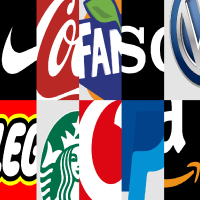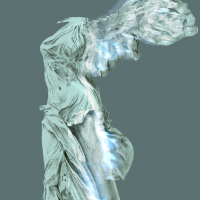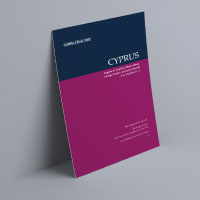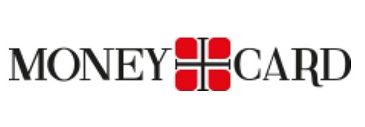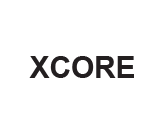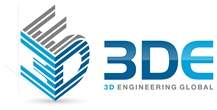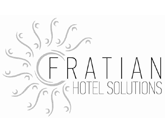GLOBAL TRADEMARK REGISTRATION
AGPLAW has over the years built a strong reputation in the field of trademark registrations, on a National, Community (EU) and International level. We encourage our clients to protect their trademarks, brand names, logos, slogans and images.

AGPLAW is proud to be an official member of the International Trademark Association, keeping our IP lawyers up to date and in full awareness of the international IP trends, programs and events.
We offer trademark registrations in over 120 countries all over the world, in addition to the harmonized single application for all EU Member States (EUIPO). This has been the result of our Firm’s excellent networking with local agents in each country. Trade mark protection in many countries requires that a local agent is appointed; this is sometimes hard to do since a trustworthy and efficient local agent is not easy to find; however, we did it for you. We are glad to have a truly global network of the finest agents on IP law who work on the same values as we do. Currently, our international network of AGPLAW IP agents/attorneys exceeds 100 professionals.
All you need to know about Trademark Registrations
Trade marks are signs that are used in trade to identify products. According to the Council Regulation (EC) No 207/2009 of 26 February 2009 a trademark is defined as follows:
A [...] trade mark may consist of any signs, in particular words, including personal names, or designs, letters, numerals, colours, the shape of goods or of the packaging of goods, or sounds, provided that such signs are capable of distinguishing the goods or services of one undertaking from those of other undertakings […].
What can be registered as trademark:
- word marks, including letters, numbers or a combination of letters, numbers and words;
- figurative marks (logo), whether or not they include words;
- colours or combinations of colours;
- slogans;
- three-dimensional marks;
- sound marks.
What cannot be registered as trademark:
- Descriptive marks (however, certain exceptions may apply, in case such marks have become distinctive due to their extensive use - mostly acceptable in the EU);
- Shapes that result from the nature of goods;
- Marks that are words or devices used to indicate specific goods/services;
- Marks that may mislead the public on the nature, the quality of the geographical origin of the goods / services;
- Marks that are contrary to public policy;
- Marks that are protected by the Paris Convention (national flags, emblems etc.);
- Marks that could be considered offensive in any other country.
Trademark Symbols (®, TM and SM):
The symbols ®, TM and SM are used to signal a claim over a trademark.
What is the difference between the trademark symbols TM, SM and ®:
The symbol ®, known as registered trademark symbol, is used as a notice of legal ownership over a mark that has been registered with a national trademark office. Consequently, this symbol should be only used to indicate a registered trademark or service mark. The use of this symbol for unregistered trademarks may constitute ground for accusation of fraud or attempt at misleading customers etc.
On the other hand, the symbols TM and SM can be used for unregistered trademarks by whoever wishes to claim rights over a trademark or a service mark. The symbol TM is used for tangible products and goods, while the symbol SM refers to the provision of services.
We offer registrations in over 150 countries all over the world, in addition to the harmonized single application for all EU Member States (EUIPO). This has been the result of our Firm's excellent networking with local agents on each country.
International trademark protection requires that a local agent is appointed; this is sometimes hard to do since a trustworthy and efficient local agent is not easy to find; however, we did it for you. We are glad to have a truly global network of the finest agents on IP law who work on the same values as we do. Currently, our international network of IP agents/attorneys exceeds 100.
We will assist you in deciding the classes necessary in order to best protect your trademark, we will recommend the countries or Communities where such registration should be done (via OHIM or WIPO or otherwise), and the stages for cost optimization purposes, we shall recommend the best strategy of registration and we will provide you with the specific requirements in each country.
According to the Council Regulation (EC) No 207/2009 of 26 February 2009 a trademark is defined as follows:
An EU trade mark may consist of any signs, in particular words, including personal names, or designs, letters, numerals, colours, the shape of goods or of the packaging of goods, or sounds, provided that such signs are capable of distinguishing the goods or services of one undertaking from those of other undertakings […].
The registration of a European Union Trademark refers to a single, unitary registration that is valid and enforceable in all the member states of the European Union. Previously in order to guarantee protection of a trademark in the EU, the owner had to submit separate applications to each member state.
Who can apply for a European Union Trademark?
- A natural person or
- A legal entity
What may be registered as an EU trademark?
An EU trade mark may consist of any signs capable of being represented graphically, particularly words, including personal names, designs, letters, numerals, the shape of goods or their packaging that can be used to distinguish the goods or services of one undertaking from those of other undertakings.
Therefore, signs that may be registered as a trade mark include the following:
- word marks, including letters, numbers or a combination of letters, numbers and words;
- figurative marks, whether or not they include words;
- figurative marks in colour;
- colours or combinations of colours;
- three-dimensional marks;
- sound marks.
What cannot be registered as an EU trademark?
- Descriptive marks (however, certain exceptions may apply, in case such marks have become distinctive due to their extensive use in the EU);
- Shapes that result from the nature of goods;
- Marks that are words or devices used to indicated specific goods/services;
- Marks that may mislead the public on the nature, the quality of the geographical origin of the goods / services;
- Marks that are contrary to public policy;
- Marks that are protected by the Paris Convention (national flags, emblems etc.);
- Marks that could be considered offensive in any member state of the EU.
What language(s) can be used for the application?
The application can be in any of the 24 official languages of the EU (Bulgarian, Croatia, Czech, Danish, Dutch, English, Estonian, Finnish, French, German, Greek, Hungarian, Irish, Italian, Latvian, Lithuanian, Maltese, Polish, Portuguese, Romanian, Slovak, Slovenian, Spanish or Swedish).
Furthermore, a second language must be chosen among the five working languages of the EUIPO (English, French, German, Italian or Spanish).
The second language can be used either by the EUIPO (in case the application was not filed in one of its five working languages) or by an opponent.
Who can file an opposition?
- Owners of earlier registrations (EUTM and national marks);
- Owners of unregistered marks of more than local significance if the law of their state gives them the right to prevent use of the EUTM;
- Owners of marks falling under Art. 6 bis of the Paris Convention (i.e. well-known marks).
What is the time limit for filing a notice of opposition?
A notice of opposition may be filed within a period of three months following the publication of the EU trade mark application.
Who can submit “observations”?
Following the publication of an application, any third party may submit “observations” that the mark is not acceptable on absolute grounds.
Under what circumstances can the rights of the owner of an EU trademark be revoked?
- In the absence of genuine use. According to the law, an EU trade mark must be put to genuine use in the European Union in the five years following its registration. Furthermore, use must not be interrupted for over five years.
- If the proprietor, the trade mark has become the common name for a product or service for which it is registered due to the owner’s acts and/or omission to take sufficient measures to prevent this.
- If the trade mark has become misleading as to the nature, quality or geographical origin of the goods and services for which it is registered due to the owner’s acts.
The above information is provided for general purposes only and cannot be considered as legal advice.
To find more related articles about trademark registrations and other intellectual property rights, please click here.
A Class is a description of the product or services that the trademark will be associated with. Registering a trademark does not automatically cover all sectors/industries but it will cover only the classes specified within the application.
When choosing the Classes to be covered by the registered trademark you need to ensure that you choose the right ones because 'adding' Classes later on, i.e. after the registration of the trademark, is not possible; you will need to re-apply through a new, a fresh one, application. Our team is available to assist you on determining the right Classes you should apply for.
Trademark Search, pre-registration:
We recommend that prior to filing for a new trademark registration the first thing to do is to confirm that your intended trademark is available for registration. We identify similar trademarks and names, therefore avoiding unnecessary expenses and claims when possible. This way you make up your mind of your registration possibilities.
Trademark Watch, post-registration:
Registering your trademark is vital, but following up is also as important. IP public authorities would not be much concerned of your trademark, the responsibility lies on you to make sure that you monitor the market and identify possible trademark applications which might be identical or similar to your trademark. It is not possible for any person to manually monitor global IP registrations however our IP network offers an automated monitoring solution which will detect possible conflicting applications and notify you in advance. This will give you the right to object to a possibly infringing mark on time, before it is too late.





